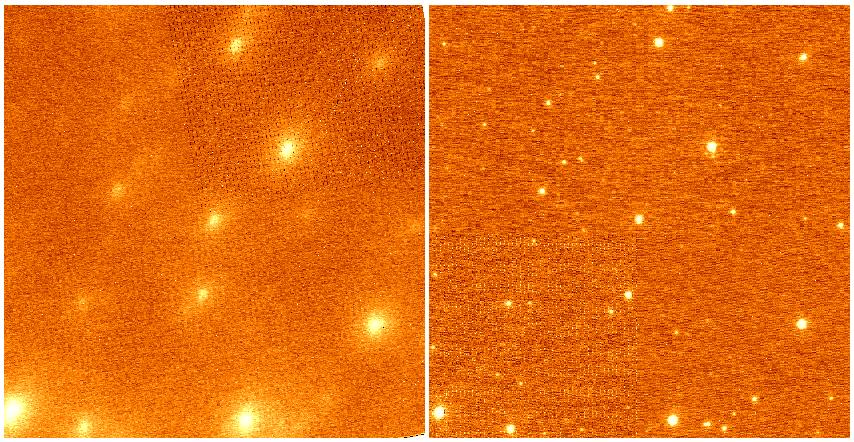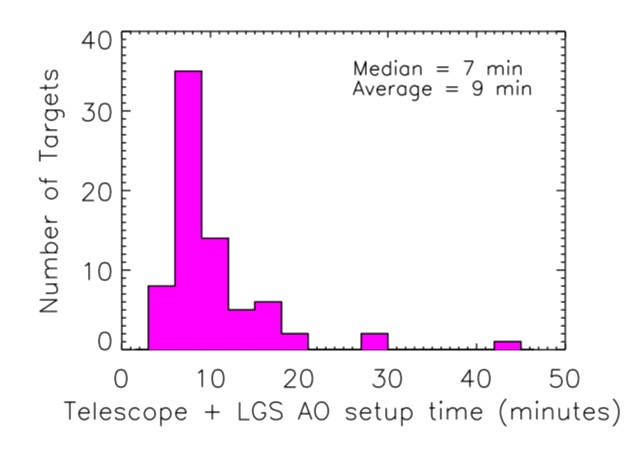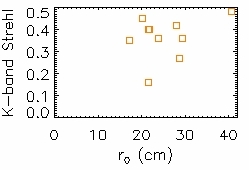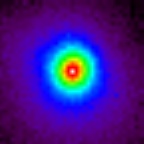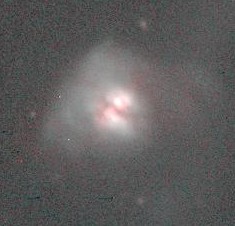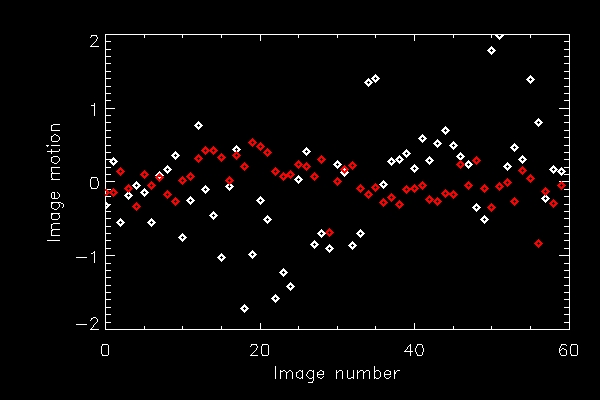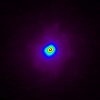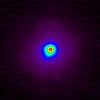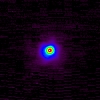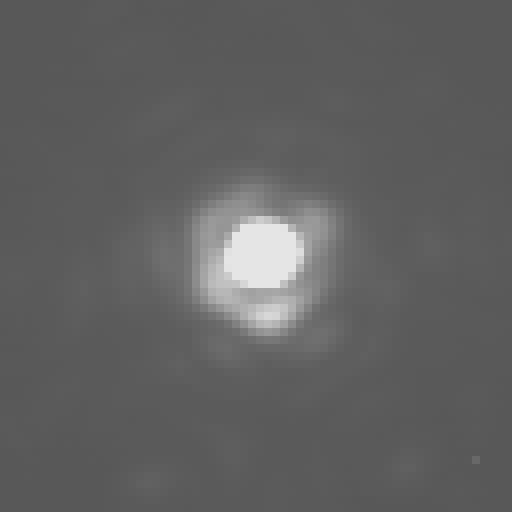 |
|||||||||||||||||||||||||||||||||||||||||||||||||||||||||||||||||||||||||
In February 2007, the Keck II AO system was upgraded with a new wavefront sensor and a new wavefront controller. KAON 489: Performance of the Keck II AO System (2007). A full description of the performance of the LGS AO system before the wavefront controller upgrade is presented in a PASP paper by the Keck LGS AO team.
All the results that follow were obtained with the old wavefront controller. Hence, the relative Strehl ratios are about 10% higher (e.g., 35% Strehl is now 38.5%). The faint guide star Strehls assume a dark sky.
All the Strehl and FWHM results as a function of magnitude, seeing and wavelength are tabulated here. This includes all the data at J-, H- and K-bands taken in 2005.
Mike Liu has collected Strehl data, displayed below, in his brown dwarf program using off-axis guide stars.
The isokinetic angle represents the distance from the tip-tilt guide star over which the Strehl is reduced to 37% of its on-axis value. We made measurements of the isokinetic angle by measuring the Strehl ratio of a bright tip-tilt star and then of a star offset 20-40'' away from the tip-tilt star with the LGS on the offset star. The average isokinetic angle at zenith on three different nights was found to be 64'', 73'' and 95''.
Due to the nature of the tip-tilt sensor, there is a large performance penalty to be paid when using an extended source as a tip-tilt reference. In some cases, it is not even possible to close the tip-tilt loop at all. HST WFPC2 or ACAM images of several extended objects which we have attempted to guide on are shown below, with their radial surface brightness profiles displayed on the left. It appears from these experiments that extended objects must have a radial surface brightness gradient of greater >1.0 (mag/arcsec^2)/arcsec in the central 1.0" (after convolution by the seeing) in order to be used as a tip-tilt reference.
The figure below shows the image quality obtained with bright binary stars with equal magnitude but different separations. There does not appear to be any significant degradation in tip-tilt performance when closing the tip-tilt loop on optical binary stars. However, there is a degradation in the performance of the image sharpening algorithm when the spacing between the stars is large, as can be seen from the PSF of the 1.95'' separation binary. The star on the left of the 1.03'' binary appears to in fact, be itself a very close binary with a separation of about 0.02''.
LGS AO observations in the vicinity of the moon lead to significant background on the STRAP tip/tilt wavefront sensor and hence a reduction in tip/tilt correction. For observations at a distance >25 degrees, the impact of the moon is negligible, while for distances <25 degrees there is a decrease in limiting magnitude of up to 2 magnitudes. If there is cirrus, the impact of the moon is much greater. KAON 425 reports all the results and gives astronomers guidelines in order to assess the impact of the moon on their observations.
The fluctuating background of Jupiter light on the wavefront sensor resulted in varying low-order aberrations, including focus. KAON 385: v2 reports the results, calculations and experience on the sky trying to image Jupiter.
The image positioning is less accurate. The star was offset 2.5'' in the North and East directions and offset back to the starting place. The position of the star shifted by 23 mas and 7 mas in X and Y respectively. More data is being analyzed.
The stars below were imaged on 1 Sep. 2004 (top row), and 29 July 2005 (bottom 3 rows), using the NIRC2 narrow camera (0.00994" per pixel) and the indicated filters. The LGS magnitude was V~11.0 and V~12.0, and seeing was 0.32" and 0.40" at K (r0=23 and 19 cm), respectively. The images below are the average of several 20s or 60s integrations, for a total integration time of 60s to 180s, which have been sky subtracted and divided by a flat. The displayed field of view is 1" across. The fine structure in the PSF of targets with faint tip-tilt stars (R>18) is dominated by image sharpening errors, and will vary temporally and with pupil angle. You may download a FITS file by clicking below the image. Filter: K'
The stars below were imaged on UT 30 June 2005 in very good seeing conditions during the isoplanatic measurement reported above. The filter was K' on NIRC2's narrow camera. The field of view displayed is 0.6'' across.
Please see these notes for a discusion of how centroid gain can affect performance for extended objects. For more information, please contact David Le Mignant. This page was last updated on 07/13/2016 22:11:06. |
|||||||||||||||||||||||||||||||||||||||||||||||||||||||||||||||||||||||||
